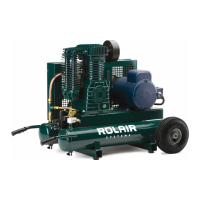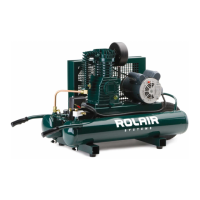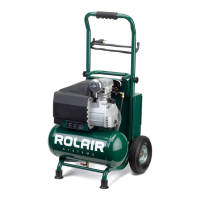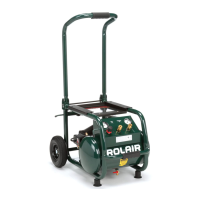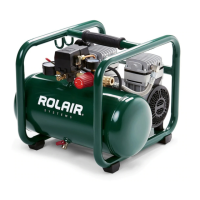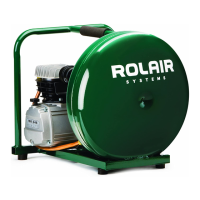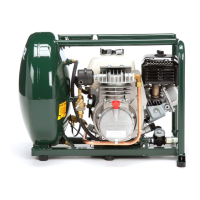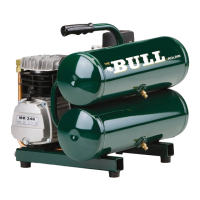Temp. 0 - 32° 32° - 55° 55° & above
NON-DETERGENT
Straight Weight
Recommended
10 WT 20 WT 30 WT
Extension Cord
Length
Motor
½ and ¾ HP
Minimum Wire Size
Motor
1, 1 ½ and 2 HP
Minimum Wire Size
Up to 25 Ft. 14 Ga. 12 Ga.
25-50 Ft. 12 Ga. 10 Ga.
2.
EXTENSION CORD TABLE
1. OIL TYPE TABLE
IMPORTANT
READ BEFORE OPERATION
SPECIFICATIONS & GUIDELINES
3. The warranty on the motor will be NULL and VOID if a failure occurs and
inspection proves a current deficiency.
4. The PRESSURE SWITCH and/or pilot unloader valve are set at factory for
maximum efficiency. DO NOT alter setting. Adjusting either will VOID
the warranty.
MODEL #
5715K17, 6715K17,
6820K17
SERIAL #__________________
606 South Lake Street > P.O. Box 346 > Hustisford, WI 53034-0346 >
920.349.3281 >
fax 920.349.3691 > www.rolair.com
